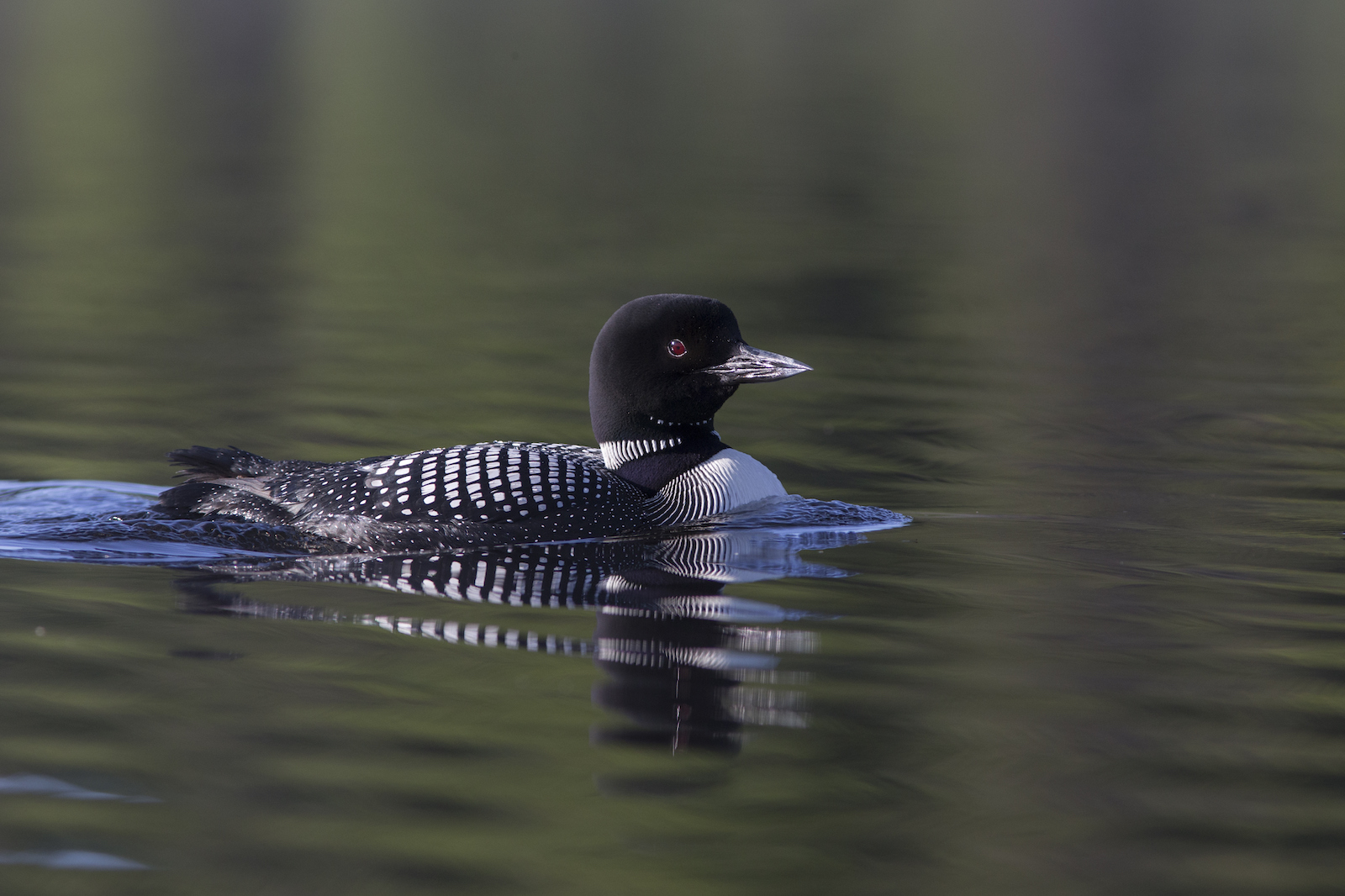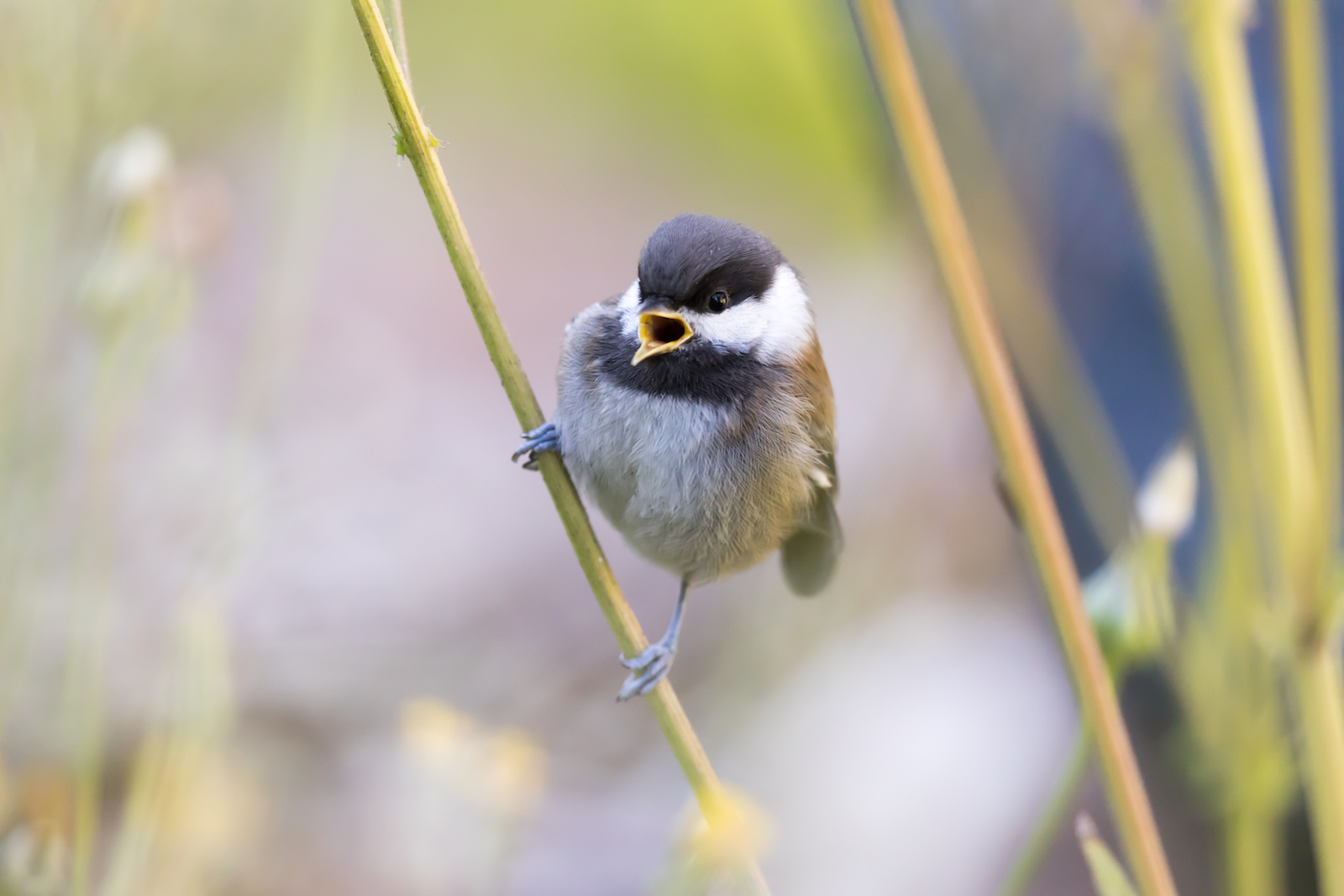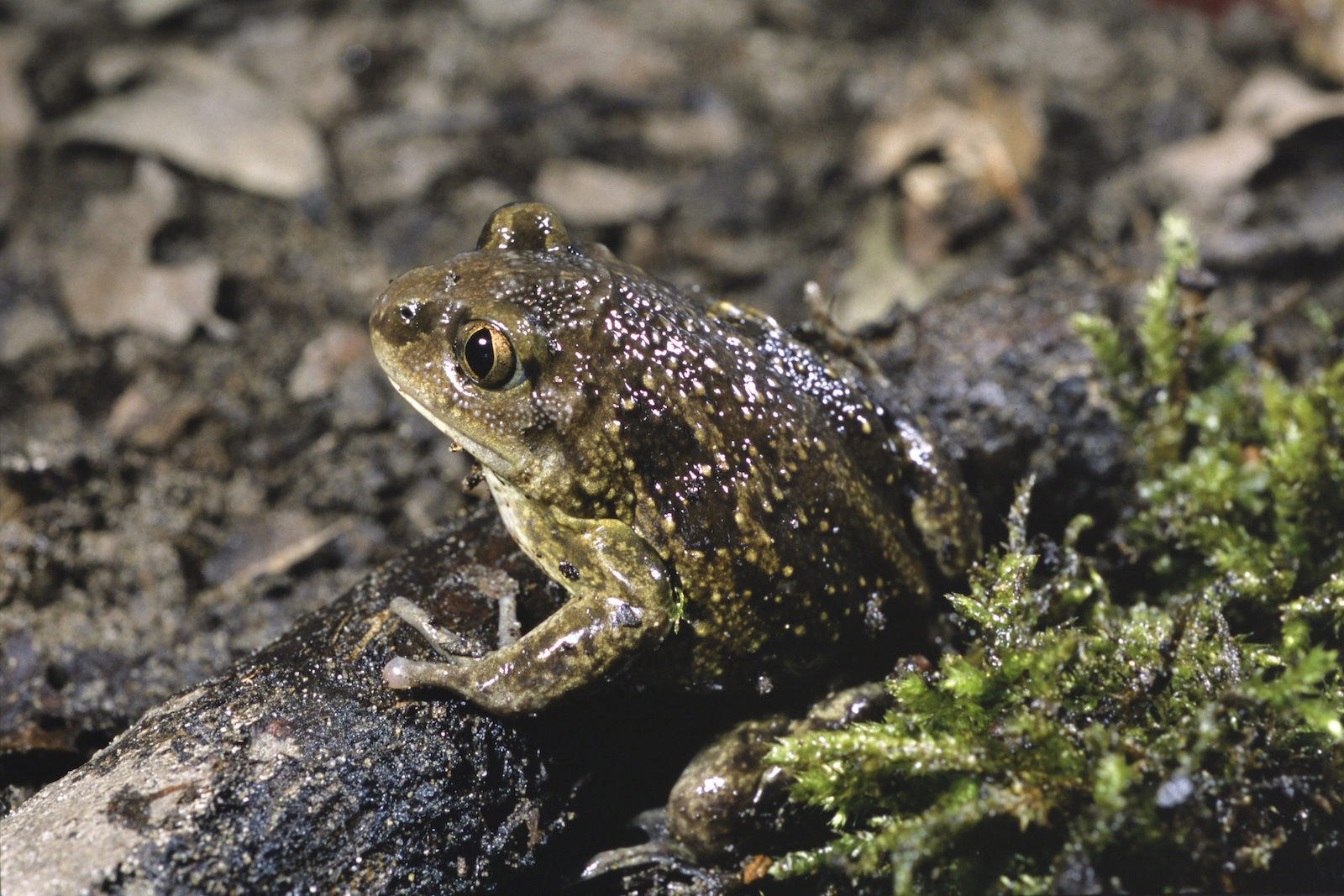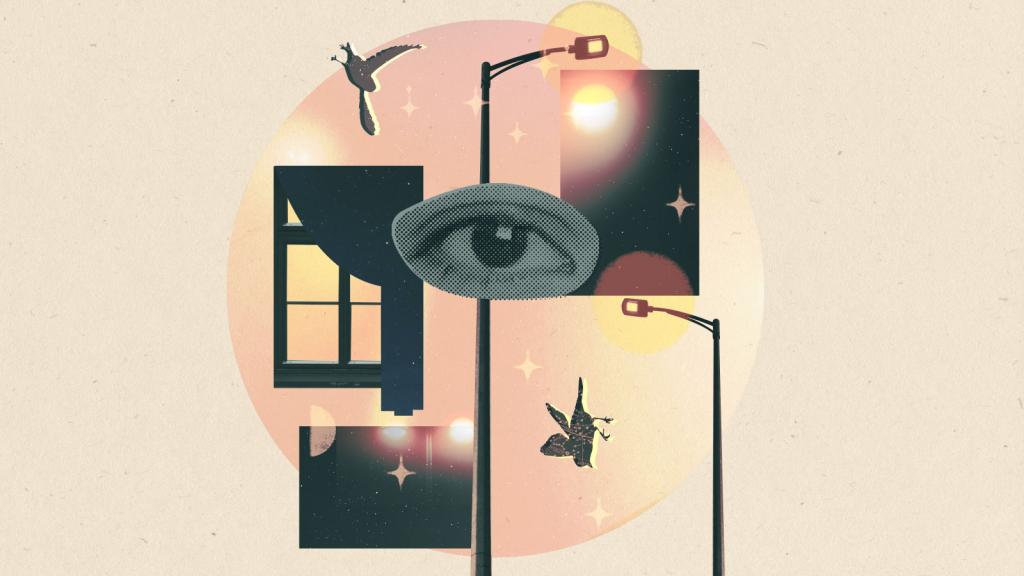This story is part of Grist’s Coming to our Senses series, a weeklong exploration of how climate change is reshaping the way we see, hear, smell, touch, and taste the world around us.
When Jeff Wells, vice president for boreal conservation at the Audubon Society, first encountered the call of the common loon on a pond near Mt. Vernon, Maine — about an hour and a half north of Portland — he thought he may have heard a ghoul. “I leaped out of bed and ran into my parents’ bedroom, like, ‘What is that?’” he told Grist, describing a melancholy wail that has made loons famous far beyond the birding community.
Even after years of summer vacations in Maine, at the southernmost reaches of the loon’s habitat, Wells hasn’t tired of their calls. When their moody warbles echo across the pond, he still beckons family members to gather on the patio to listen. But loons, like so many other birds, are threatened by climate change. Rising summertime temperatures and warmer lake waters may eliminate important swathes of their habitat, and elevated precipitation is putting their nests at greater risk of flooding.
As a result, loons’ songs are in danger of fading from many parts of the world.

Similar consequences are playing out for iconic songbirds — and other vocal animal species — everywhere. According to a 2018 report from the Audubon Society, over 300 North American bird species could lose half their ranges due to climate change in the next 60 years. A widely-cited report published in 2019 showed that nearly 3 billion North American birds across every biome have disappeared since 1970 — a “staggering” loss driven not only by climate change but by suburban sprawl, toxic chemicals, and other stressors.
Among the bird species facing ongoing climate pressures are the whippoorwill of the Southern United States, whose “lonesome” call has been immortalized by country music star Hank Williams, as well as the seemingly ubiquitous black-capped chickadee, whose call involves simply repeating its own name: “chickadee-dee-dee!”

A robust and growing body of research suggests that a smaller population of chirping individuals can also cause those that are left to sing more quietly and with less variation. The crashing population of the Australian regent honeyeater, for example, has caused “song culture” to break down, leaving remaining individuals to simply copy other species’ calls. Hawaiian honeycreepers’ songs have also become less complex as their numbers have plummeted.
Insects, which are less beloved but just as cacophonous as their avian relatives, are also facing intense pressures from habitat loss, climate change, and the rampant use of agrochemicals. A staggering 40 percent of insect species are in decline around the world, with an additional one-third of them threatened with extinction. Some species of crickets, for example, have been listed as “critically endangered” by the International Union for the Conservation of Nature, thanks to the combination of wildfires, industrial agriculture, and a precipitous decline in forest and wetland habitats. Entomologists have also warned of metabolic disturbances in insect species as a result of warming weather, making some species more likely to swarm or, in the case of Brood X cicadas, emerge earlier than anticipated.

These same environmental factors — plus a nasty, human-spread fungus that experts have called “the most destructive pathogen ever described by science” — have put one-third of amphibians at risk of extinction too, threatening to wipe many of iconic croaks, grunts, barks, and bellows off the face of the planet.
David George Haskell, a biologist and author of the book Sounds Wild and Broken, said he experiences the diminished soundscape as a “very thin, worn cloth,” comparing the richness of an untrammeled soundscape to the texture of thickly woven tapestry. “It’s a ground-up soundscape where thousands of species are finding their way within this whole,” he said. “It’s a lot more anarchic than the very controlled experience of listening to a band or an orchestra.”
More and more, researchers are documenting the fragility of the planet’s natural soundscape; many say the changes to Earth’s acoustic fabric speak to just how much new, unpredictable climatic conditions are messing with the Earth’s natural balance. One 2019 paper published in the journal Trends in Ecology and Evolution argues that climate-related changes to the nonliving world — higher ocean temperatures, more intense rainfall — may have cascading effects on the soundscape, since qualities of the air, earth, and water affect the propagation of sound.

Compared to dire climate consequences such as extreme weather, famine, and human conflict, the degradation of our planet’s normal soundscape seems fairly minor. But many scientists and environmental advocates say that in that growing silence, we risk losing something unrecoverable — not only the melodies of nature and the symphony they create as a composite, but something that speaks to our awareness of the natural world around us.
Catriona Morrison, a senior research associate at the University of East Anglia in the U.K., said it’s as if musicians in nature’s orchestra were slowly exiting off of stage left. “It might not be noticeable to start with,” she said, “but eventually you end up at a point where you’ve got very few instruments or players left.”

In the 1960s, marine biologist-turned-journalist Rachel Carson published the book Silent Spring. In it, she implored readers to imagine a world made quieter by the “grim specter” of widely used pesticides like DDT, which when ingested by songbirds can cause eggshells to thin and break.
“On the mornings that had once throbbed with the dawn chorus of robins, catbirds, doves, jays, wrens, and scores of other bird voices,” she wrote, “there was now no sound; only silence lay over the fields and woods and marsh.”
Now considered an environmental classic, Carson’s book awakened a generation to the hazards of many industrial chemicals. DDT was banned and over the next 20 years, Congress passed the Clean Water Act, the Clean Air Act, and the National Environmental Policy Act. These three policies still form the backbone of federal environmental law.
But the threat to the natural world hasn’t been averted — neither for the environment nor for the sounds of the natural world. DDT’s phaseout addressed just one of many threats to Earth’s sounds, and new dangers are emerging in every corner, from the malignant spread of plastics to human-made developments encroaching on animals’ habitats. Climate change in particular threatens to disrupt the planet’s soundscape by pushing a million species to extinction and shifting others to areas where they’ve never lived before.

According to Wells, it’s not just those who simply like to listen to a lush field at twilight who will lose out as a result of these alarming trends. The deterioration of the planet’s soundscape is likely to have adverse impacts on human culture and people’s connections with the natural world. “Sometimes our bodies reach out to make those connections without even trying, and sound is one of the ways we do it,” he said.
In other words, even those who are not actively listening to the chorus of the natural world are still hearing it. Many individual sounds can have special significance. They can convey a sense of place, such as loon songs — which have been described as giving voice to “the wildness of the north” — or the chirping of cicadas, a staple of prairie life. Other sounds, such as the jingling chorus of spring peeper frogs — which are also threatened by climate change — herald the changing of the seasons, or good or bad luck.
Bernie Krause, one of the world’s leading bioacoustic engineers, has recorded more than 1,100 marine and terrestrial soundscapes over the course of decades-long career. Not one of them, he says, has been untouched by climate change. The loss of half of the world’s coral reefs since 1950, for example, has dramatically reduced habitat for grunting, gurgling, and croaking reef fishes. The destruction of one-third of the world’s tropical and temperate forests has quieted them, too. And “without these ambiences to lure us outside, to calm us and restore our flagging spirits,” he told Grist, “human culture becomes dystopic and pathological.”

Simon Butler, an associate professor of biology at the University of East Anglia in the U.K., expressed a similar sentiment. As a result of natural soundscapes’ “chronic decline,” he said, one of our key pathways for connecting to nature is in danger, not only making people less likely to care for the natural world but depriving them of the physical and mental health benefits that come from exposure to natural sounds.
These benefits are well-documented. One meta-analysis published last year in the Proceedings of the National Academy of Sciences, for example, found that exposure to sounds like running water and chirping insects were linked to significant improvements in key health metrics such as blood pressure and cognitive ability. The study’s lead author told Everyday Health that this is because “an environment that is filled with natural sounds feels safe and allows us to let our guard down.”
Unwanted noise, by contrast — like the blaring of a car alarm — makes people feel like they’re in danger, increasing people’s “stress and annoyance.” And for all the sounds the Earth is losing each year, there certainly are many new and more grating ones to take their place.
“Anthrophony” is a term that acoustic experts use to refer to sounds created by humans, such as revving car engines or heavy industry. Others might call this “noise pollution,” a nod to its unwanted nature. It’s ubiquitous in urban centers, driven by a nearly inescapable chorus of noisemakers like jackhammers, air conditioners, lawn mowers, airplanes, and — of course — cars. Some experts say the din is getting louder.
The ocean is perhaps the place most violently impacted by elevated anthrophony. Over the past 50 years, the rapid acceleration of coastal development, trawling for fish, shipping, deep-sea oil and gas exploration, and other activities have caused an exponential increase in ocean noise. Compounding the problem is the fact that warmer water temperatures — a product of climate change — increase the speed at which sound travels, making for an even noisier ocean. Some underwater noises are loud enough to cause fatal damage to whales’ lungs and digestive systems, while softer ones can foil the search for food and mates.

“Noise disrupts all sorts of ecological things happening in the ocean that we’re just starting to understand,” said Ben Halpern, a professor of marine ecology at the University of California Santa Barbara.
The racket is bad for people, too, and disadvantaged communities tend to be the most heavily impacted. The sounds of construction, industry, roadways, and more cause disproportionate damage to eardrums in low-income communities and communities of color. Haskell, the biologist and author, urged policymakers to rectify this environmental justice through city planning. “We have an opportunity,” he said, “to prioritize sensory awareness and giving everyone the opportunity to experience the songs of birds and the absence of obnoxious levels of noise.”

Today’s world looks — and sounds — quite different from the world in which Rachel Carson published the first edition of Silent Spring. Some 86 percent of Americans live in urban areas, often in metropolises whose population density nears 300 people per square mile. Here, the sounds of nature must compete with the din of traffic, construction, industry, advertisements, and other human activity. To the majority of Americans who now live at such a remove from the bucolic soundscapes described in Rachel Carson’s writings, does the fear of a “silent spring” still hold the same power for people as it once did?
Some worry that the answer is no, that quieter, less varied, and less beautiful sounds could hinder people’s connection to the natural world, preventing people from taking action to protect it.
There is so much action needed to preserve remaining soundscapes, from reducing shipping speeds on the open ocean to reversing the decline of boreal forests. Gordon Hempton, an acoustic ecologist, is working through his nonprofit — Quiet Parks International — to track noise levels and certify areas that are free from human noise pollution. He told Grist he hopes the certification will save quiet from the “road to extinction” by incentivizing policies to protect it, such as aligning flight paths over already-noisy roadways. But as a simple first step, he and others like Krause argue that people should open their ears to the symphony that — while now diminished — continues to set the backdrop for all of life’s activity.



